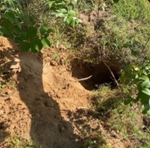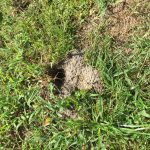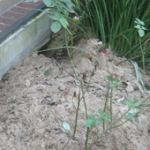Nine-banded armadillos thrive in warmer regions across the United States, especially in the southeast and southwest. They are known for their hard-scaled armor and clawed toes used for digging. These unique creatures are relatively harmless. The greatest risk they pose is digging up your yard and garden.
Armadillo Holes
Skunks, raccoons, and armadillos will dig holes in your yard for grubs, worms, and other underground creatures. Armadillo holes are usually 1 to 3 inches deep and 5 inches wide.
They also dig burrows big enough for them to crawl into sleep. The burrows can grow to be extensive. Their burrows can become dangerous when they extend under your home.
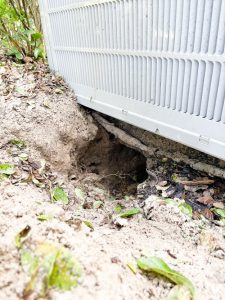
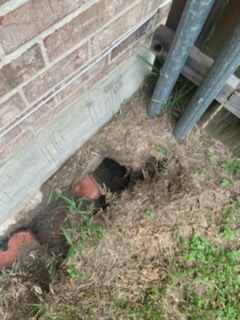
Are Armadillos Dangerous?
Armadillos pose very little danger to people. A scared armadillo usually jumps in the air to distract predators or runs away. When facing a human, it is not likely that the pest will bite. Armadillos have small, peg-like teeth that do not usually cause injury.
While armadillos can carry rabies or leprosy, the number of human cases caused by these pests is unknown. Both diseases transfer through direct contact with infected wildlife or people, so it’s best to avoid touching armadillos.
Because of the danger of disease, homeowners should not try to dispose of dead armadillos on their own. As with any wild animal, handling these critters is safest with the proper equipment and training. Residents with concerns about armadillos can contact the wildlife experts at Trutech.
Armadillo droppings create issues for homeowners in yards, as they not only smell bad but are easily stepped on and difficult to clean up. Feces are often scattered near backyard burrowing sites or around ditches with damp soil. When identifying armadillo scat, look for small groups of inch-long, brown pellets.
Armadillo Habitats
Armadillos stay in the Southern part of the United States because they cannot survive freezing temperatures. Armadillos dig searching for food and create burrows to escape the cold. If the ground is frozen, they can do neither.
Armadillos are a nuisance for homeowners in cities like Tampa, Jacksonville, Orlando, Savannah, Fort Worth, and Dallas. As you get closer to Kansas City and Richmond, armadillos become almost non-existent.
Armadillo Control
Trapping an armadillo takes skill and training. They are predictable, and when searching for food tend to ignore their surroundings. A cage trap with a constructed funnel is effective to catch an armadillo.
Fortifying foundations and erecting barriers is one of the most effective ways to control armadillos. They have strong front legs with sharp claws that are ideal for digging.
In Charleston, we installed dig defence around an A/C unit. If you look closely, you can see the armadillo holes around the unit. The barrier kept the armadillo from digging under the unit.
Once the armadillo has been removed, you should make your yard less attractive. Remove brush piles so animals have less coverage. Clean up any potential food sources. In hotter climates, water the ground early. The sun will dry the soil making it harder to dig.

Trust the Wildlife Experts
We do not recommend trying to catch an armadillo. You might be able to capture one, but it could be dangerous. Armadillos thrash their legs when picked up. Their strong digging claws can cause injuries. If you do trap an armadillo, different states have different regulations regarding release and relocation.


